Why Medication Errors Happen When Patients Move Between Care Settings
Every year, hundreds of thousands of patients in the U.S. are harmed because their medications don’t get properly tracked when they move from hospital to home, or from one doctor to another. These aren’t rare mistakes-they’re common, preventable, and often deadly. Medication reconciliation is the single most effective tool we have to stop them, yet it’s still done poorly in most places.
Think about this: a 72-year-old man with high blood pressure, diabetes, and atrial fibrillation gets discharged after a heart attack. He’s on eight different pills. The hospital team says he’s fine. But the community pharmacist never gets the full list. Two days later, he takes a new blood thinner prescribed by his cardiologist-without knowing he’s already on one. He ends up back in the ER with internal bleeding. This isn’t a story from a textbook. It happened in a Seattle hospital last year, and it’s happening every day.
The problem isn’t that providers are careless. It’s that the system is broken. According to the Agency for Healthcare Research and Quality (AHRQ), about 60% of all medication errors occur during transitions of care. That’s when patients move between hospitals, nursing homes, clinics, or home. The World Health Organization calls this one of the biggest patient safety challenges we face.
The Four Steps of Real Medication Reconciliation
Medication reconciliation isn’t just copying a list from one form to another. It’s a process with four real, non-negotiable steps:
- Create a complete list of everything the patient is actually taking-prescription, over-the-counter, vitamins, herbal supplements, even creams and patches. Don’t trust the patient’s memory. Don’t rely on what’s written in the old chart. Call the pharmacy. Ask the family.
- Make a list of what the provider wants to prescribe now-new meds, changes, stops.
- Compare the two lists side by side. Look for duplicates, omissions, interactions, wrong doses. A patient on warfarin and aspirin? That’s a bleeding risk. A patient on two different statins? That’s liver damage waiting to happen.
- Decide what to do. Do you keep the old dose? Stop one? Switch to a safer alternative? Document the decision clearly and hand it off.
This isn’t optional. The Joint Commission has required this since 2005. Yet only 42% of U.S. hospitals do it well, according to Dr. Robert Wachter of UCSF. The rest are just checking a box.
Technology Helps-But Only If Used Right
Electronic health records (EHRs) were supposed to fix this. And in some ways, they have. Studies show that when used correctly, EHRs with built-in decision support can cut medication errors by 32%. Barcode scanning at the bedside reduces wrong-medication errors by nearly half.
But here’s the catch: when hospitals just slap on a new EHR system without changing how people work, errors go up. The MARQUIS study found that during the first six months after implementing a new EHR, medication discrepancies increased by 18%. Why? Because nurses and pharmacists were spending 12 to 15 extra minutes per patient just trying to get the system to work. So they took shortcuts. They copied and pasted. They ignored alerts.
The real winner isn’t the software-it’s the Medication at Transitions and Clinical Handoffs (MATCH) toolkit from AHRQ. It’s not a tech tool. It’s a playbook. It tells you exactly who does what, when, and how. Hospitals that follow all 159 recommendations in MATCH see a 63% drop in medication errors. Those that just use EHRs without the workflow changes? Only 41%.
And don’t forget interoperability. Only 37% of U.S. hospitals can electronically share medication data with community pharmacies. That means pharmacists still spend hours calling hospitals just to get a list. One pharmacist on Reddit said: “I called 14 different hospitals last month just to get one patient’s meds right.” That’s not healthcare. That’s a phone tree nightmare.
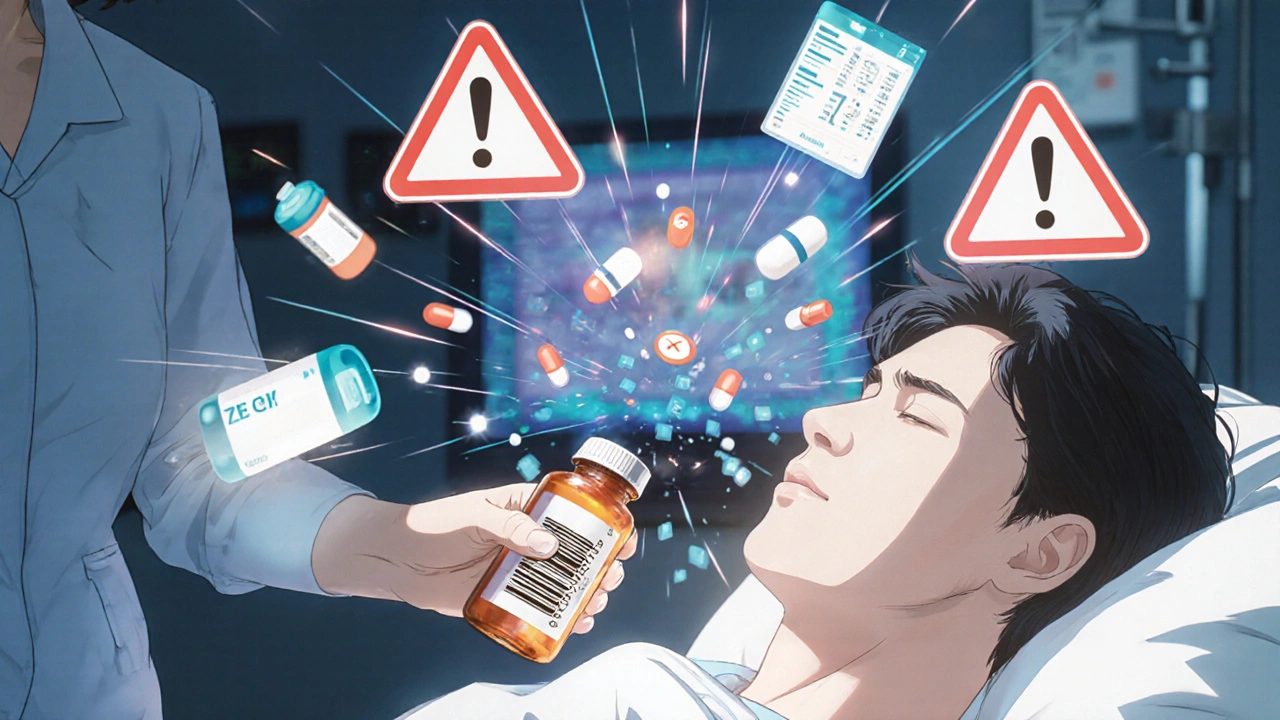
Pharmacists Are the Secret Weapon
The most effective way to prevent errors at discharge? Put a pharmacist in charge.
Studies show that when pharmacists lead medication reconciliation at discharge, post-discharge errors drop by 57%. Hospital readmissions fall by 38% in the first 30 days. That’s not a small win. That’s life-saving.
Why? Because pharmacists are trained to spot interactions, dosing errors, and duplicate therapies. They know what’s dangerous. They also have the time to sit with patients and explain what each pill is for. One pharmacist in Minnesota told me: “Catching a duplicate anticoagulant order that would’ve caused a major bleed? That’s why I do this job.”
But only 14% of U.S. hospitals have dedicated transition pharmacists. The American Society of Health-System Pharmacists (ASHP) says every hospital should. They’ve shown that facilities with these roles see 53% fewer adverse drug events.
And it’s not just hospitals. Community pharmacies need to be part of the team. If your patient’s local pharmacist doesn’t know what meds they were discharged on, you’re setting them up to fail.
Patients Need to Be Involved-But Most Aren’t
Patients are the last line of defense. If they don’t understand their meds, they’ll take them wrong. Or forget them. Or stop them because they think they’re not needed.
A 2024 Kaiser Family Foundation survey found that 72% of patients don’t understand why medication lists matter during transitions. That’s terrifying. But here’s the good news: 85% of patients who actually participated in the reconciliation process said they felt more confident about their meds.
So what does real patient involvement look like? It’s not handing them a paper list. It’s asking them: “Can you tell me what each of these pills is for?” “Do you know why you’re taking this one?” “Have you taken this before?”
Some hospitals now use “teach-back” methods. After explaining the meds, they ask the patient to repeat it back in their own words. If they can’t, you keep explaining. Simple. Effective. Underused.
And don’t forget caregivers. In many cases, it’s the spouse, adult child, or home health aide who’s actually giving the meds. They need to be in the room during discharge counseling.
What’s Holding Hospitals Back?
Let’s be honest: the biggest barrier isn’t technology. It’s culture.
A 2023 AHRQ survey found that 63% of hospitals say physicians resist medication reconciliation. Why? Because it takes time. Because they think they already know the patient’s meds. Because they don’t see it as their job.
But here’s the truth: if you don’t fix this, someone will die. And you’ll be legally responsible.
Other roadblocks:
- Time constraints: The ideal reconciliation takes 15-20 minutes per patient. Most hospitals give staff 8-10. That’s not enough.
- Unclear roles: Who’s responsible? The nurse? The pharmacist? The resident? The MARQUIS study found that when roles aren’t defined, errors go up by 15%.
- Training gaps: Staff aren’t trained to ask the right questions. They’re trained to click boxes.
Solutions? Embed reconciliation into existing workflows. Don’t make it an extra task. Make it part of admission, transfer, and discharge routines. Use checklists. Assign clear roles. And don’t punish people for finding errors-reward them.
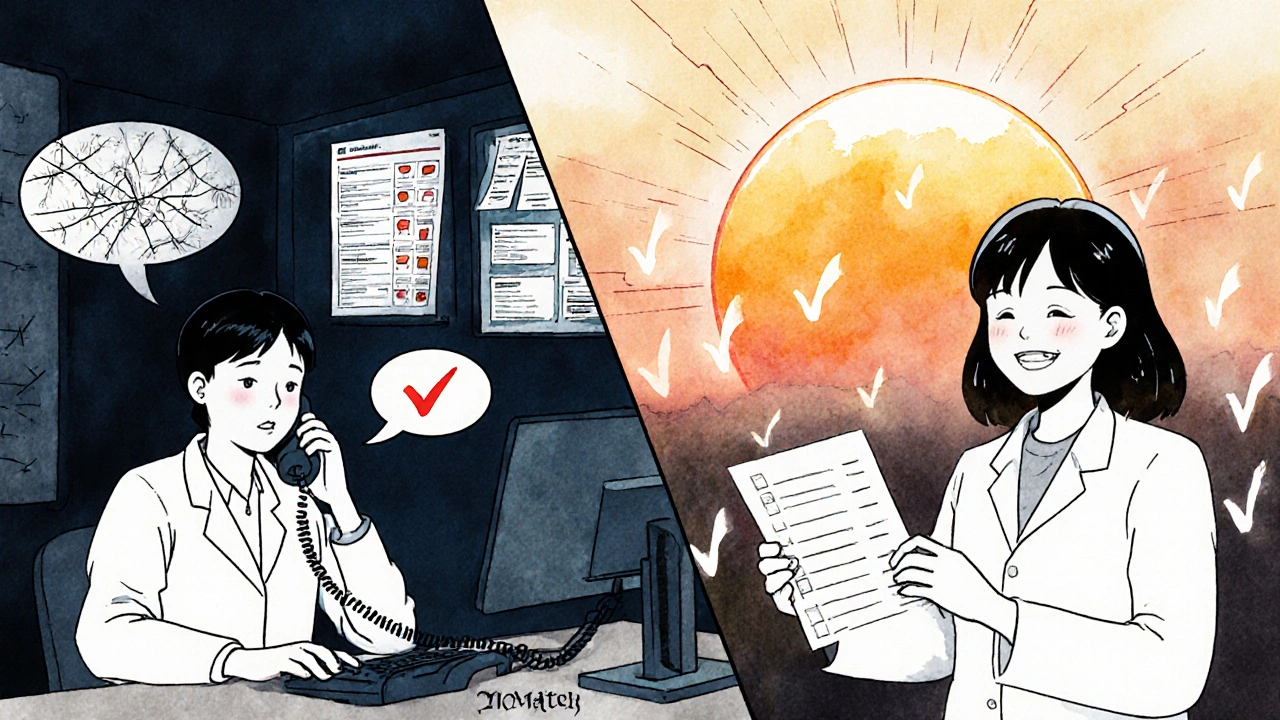
What’s Changing in 2025?
The rules are tightening. The 2025 National Patient Safety Goals (released December 2024) now require verification of high-risk medications using at least two independent sources. That means you can’t just rely on one chart or one phone call.
The WHO’s Phase 2 of “Medication Without Harm” (launched October 2024) targets transitions specifically. It wants a 30% reduction in medication-related harm in high-risk transitions by 2027.
And new tools are coming. In August 2024, the FDA cleared MedWise Transition, an AI-powered tool that scans a patient’s entire medication history across systems and flags dangerous interactions in seconds. In a 12-hospital pilot, it cut discrepancies by 41%.
But tech alone won’t save lives. People will.
What You Can Do Right Now
If you’re a provider, here’s what to do today:
- Start every discharge with a full medication reconciliation-not a summary, not a copy-paste. A real list.
- Involve the pharmacist. If your hospital doesn’t have one on transition rounds, advocate for it.
- Ask the patient: “Can you tell me what each of these pills is for?” Write down their answer.
- Send the final list to the patient’s pharmacy. Don’t assume they’ll get it.
- Follow up. Call the patient 48 hours after discharge. Ask if they’ve started the new meds. Ask if they’re confused.
If you’re a patient or caregiver:
- Bring a list of all your meds to every appointment-including supplements and OTCs.
- Ask: “Is anything being added, changed, or stopped?”
- Get the discharge medication list in writing-and ask for an explanation of each one.
- Call your pharmacy and confirm they have the updated list.
Final Thought: This Isn’t About Compliance. It’s About Care.
Medication errors during transitions aren’t accidents. They’re system failures. And every time one happens, it’s because someone didn’t have the time, the training, the support, or the authority to do the right thing.
But we know how to fix it. We have the tools. We have the data. We have the guidelines. What’s missing is the will.
It’s not about checking a box on a form. It’s about making sure a grandmother doesn’t overdose on her blood thinner. It’s about ensuring a young man with epilepsy doesn’t have a seizure because his meds were stopped without warning. It’s about trusting that the person leaving the hospital will be safe when they get home.
That’s not policy. That’s humanity.
What is medication reconciliation and why is it important?
Medication reconciliation is the process of creating the most accurate list possible of all medications a patient is taking-including prescriptions, over-the-counter drugs, vitamins, and supplements-and comparing it to the list of medications ordered during a care transition. It’s important because up to 60% of medication errors happen during transitions, such as hospital discharge. These errors can lead to dangerous drug interactions, overdoses, or missed treatments. Reconciliation prevents harm by catching mistakes before they reach the patient.
Who is responsible for medication reconciliation at discharge?
While everyone on the care team plays a role, pharmacists are the most effective at leading discharge reconciliation. They’re trained to spot drug interactions, dosing errors, and duplicate therapies. The American Society of Health-System Pharmacists (ASHP) recommends that pharmacists take the lead, especially in high-risk cases. Nurses and physicians must support them by providing accurate information and verifying decisions. Ultimately, responsibility is shared-but accountability must be clear.
How can technology help reduce medication errors during transitions?
Technology like Electronic Health Records (EHRs), Clinical Decision Support Systems (CDSS), and barcode scanning can reduce errors by up to 48% in hospitals. Tools like the AHRQ MATCH toolkit improve outcomes by guiding workflows, not just providing software. AI-powered tools like MedWise Transition, cleared by the FDA in 2024, can scan a patient’s full medication history and flag dangerous combinations in seconds. But tech only works when it’s integrated into real clinical workflows-otherwise, it creates more errors by slowing staff down or generating alert fatigue.
Why do medication errors increase after a new EHR is implemented?
When hospitals implement a new EHR without changing how staff work, errors often go up. A 2021 study in JAMA Internal Medicine found that discrepancies increased by 18% during the first six months after rollout. Why? Staff spend too much time wrestling with the system, so they take shortcuts: copying and pasting, ignoring alerts, or skipping steps. The problem isn’t the software-it’s the lack of training, role clarity, and workflow redesign. Successful implementations use tools like the AHRQ MATCH toolkit to align technology with human behavior.
What should patients do to protect themselves during care transitions?
Patients should bring a complete, up-to-date list of all their medications-including doses and reasons-for every appointment. Ask: “Is anything being added, changed, or stopped?” Get the discharge medication list in writing. Ask a family member or caregiver to help review it. Call your pharmacy to confirm they have the updated list. And don’t be afraid to say, “I don’t understand why I’m taking this.” If you’re confused, you’re at risk. Your voice is your safety net.
Are there regulations requiring medication reconciliation?
Yes. The Joint Commission has required medication reconciliation at admission, transfer, and discharge since 2005. In the U.S., Medicare and Medicaid (CMS) require it as part of hospital Conditions of Participation. Non-compliance can result in payment reductions of up to 1.5%. The WHO’s global initiative “Medication Without Harm” and the European Union’s iPRI framework also mandate reconciliation. In 2025, new National Patient Safety Goals will require verification of high-risk medications using at least two independent sources.
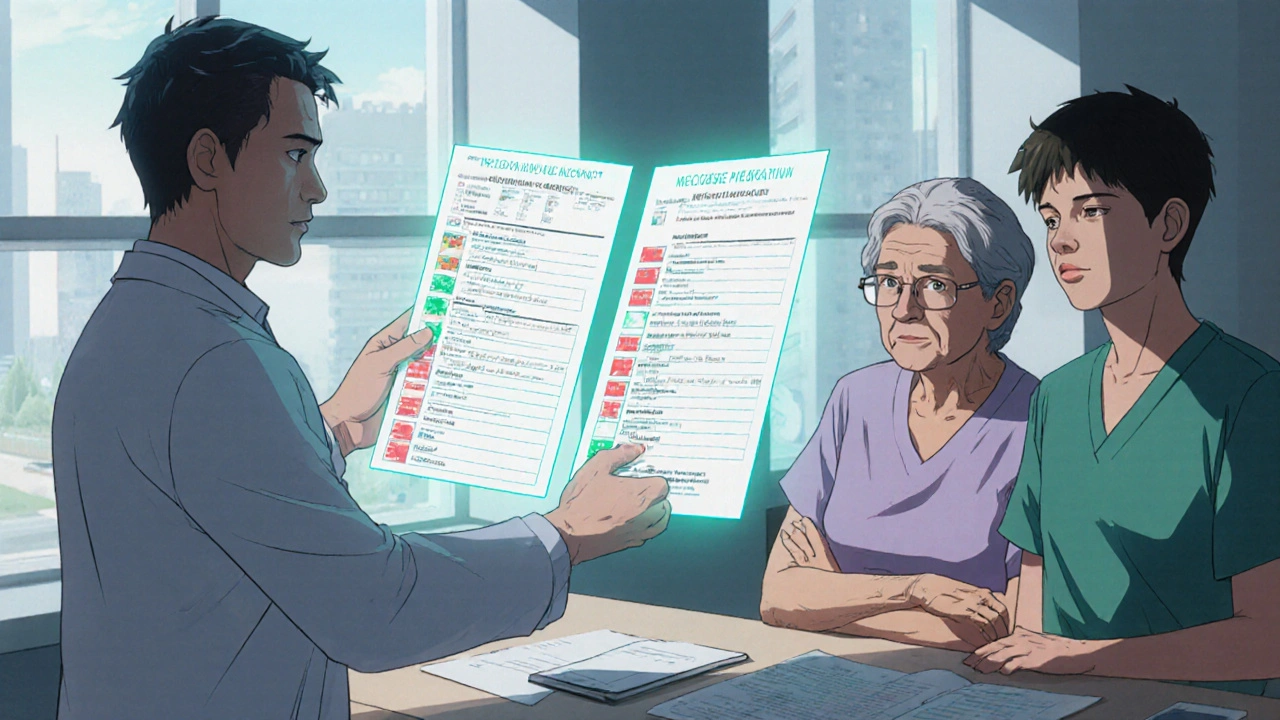

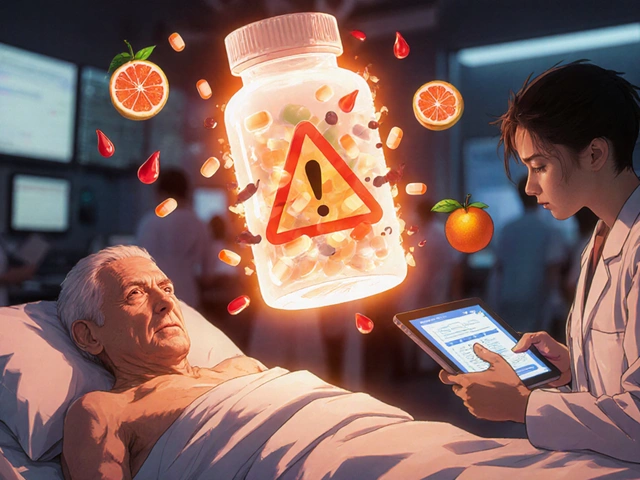
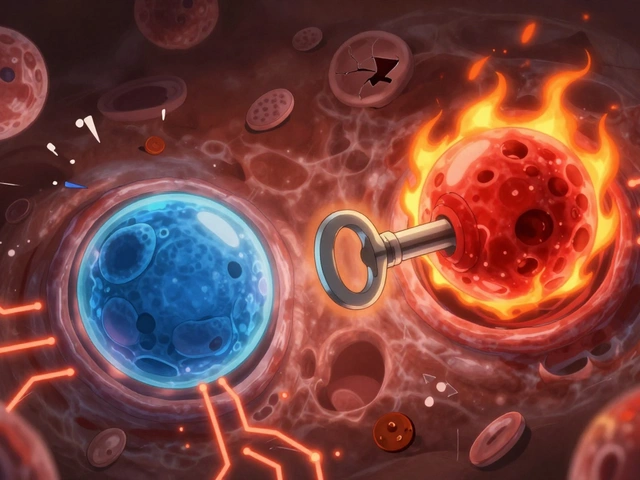



Write a comment
Your email address will be restricted to us